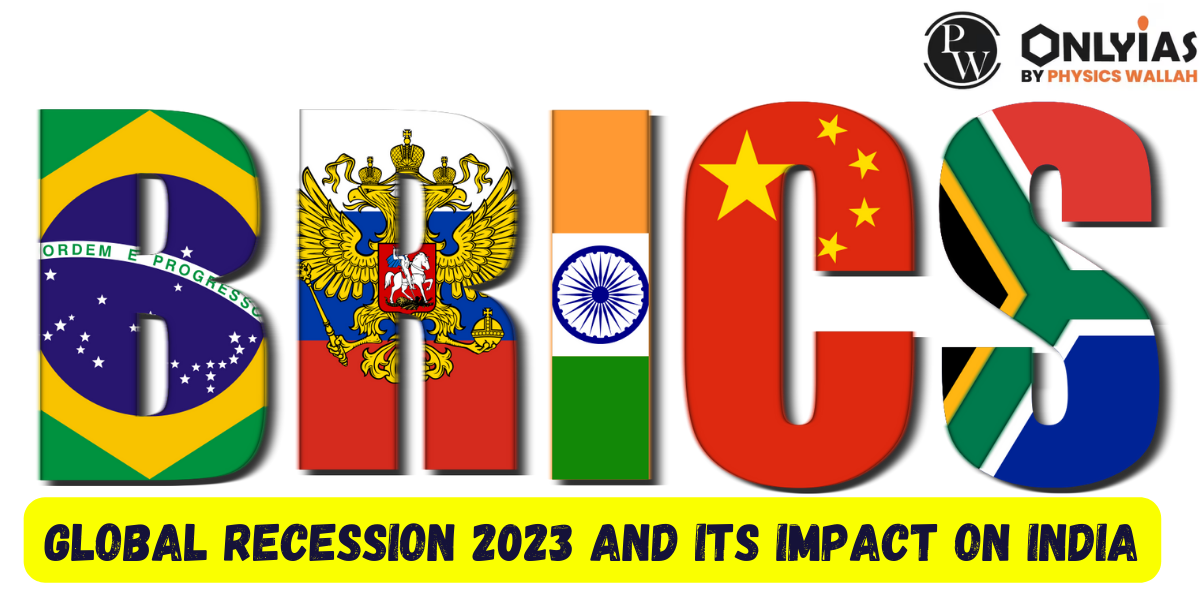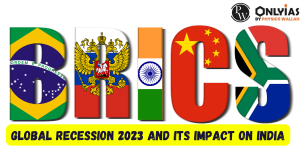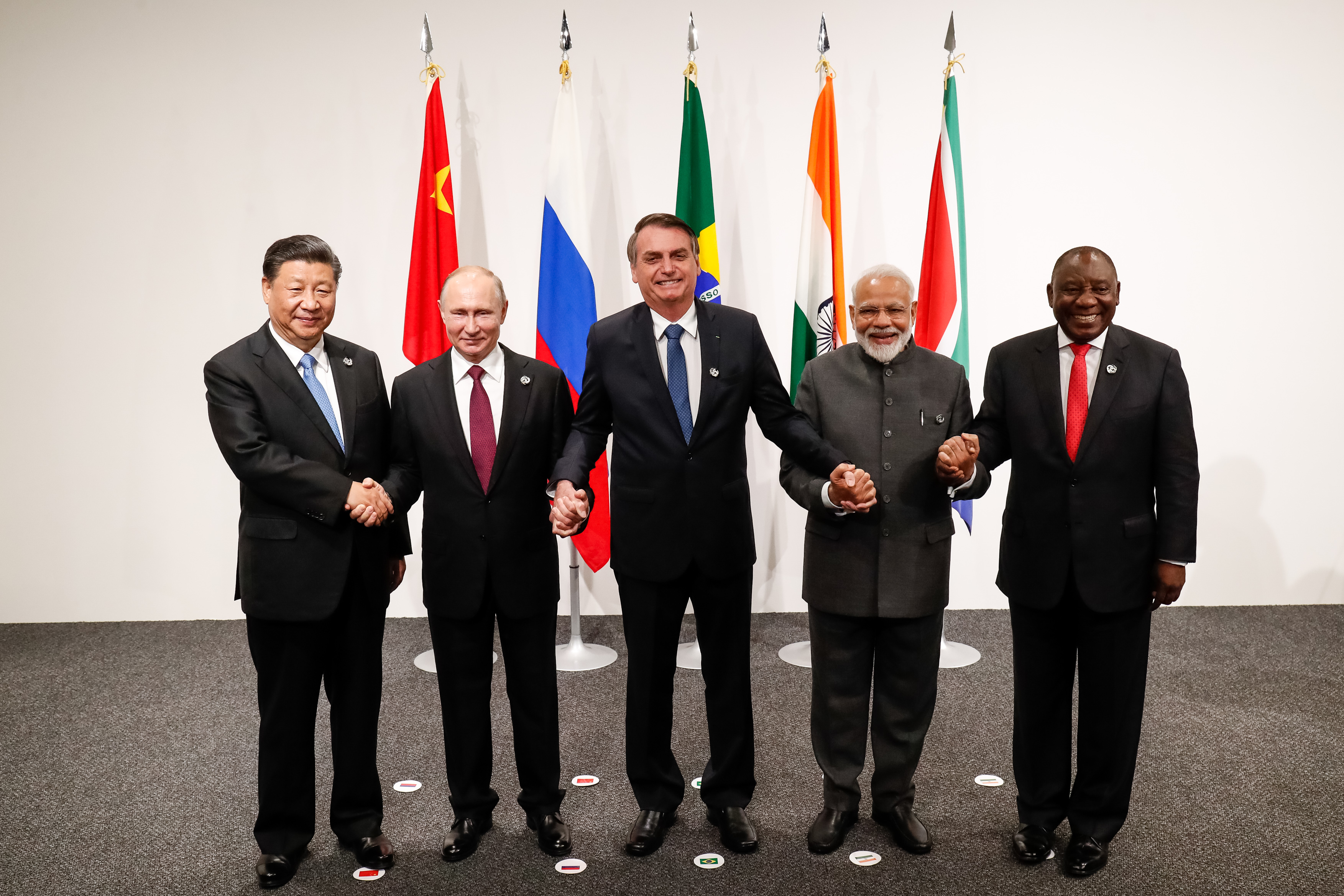
BRICS is an acronym that stands for Brazil, Russia, India, China, and South Africa, a group of five major emerging economies that have come together to foster cooperation and enhance their global influence. The BRICS countries represent significant regions of the world and hold great potential for shaping the global economic landscape. Let’s explore the full form of BRICS, its headquarters, the leaders of each member nation, and its purpose in the international arena.
The term BRIC was coined in 2001 by economist Jim O’Neill to represent the four rapidly growing economies of Brazil, Russia, India, and China. Later, in 2010, the group expanded to include South Africa, and the acronym was modified to BRICS. These countries hold significant importance in their respective fields and contribute significantly to the global economy. Together, they account for more than 40% of the world’s population, over a quarter of global income, and possess substantial reserves of global natural resources.

BRICS represents the initials of the five member countries:
BRICS, originally coined as BRIC, represents a group of four rapidly growing economies – Brazil, Russia, India, and China – which later expanded to include South Africa. Together, these countries wield considerable influence in global affairs, accounting for a substantial share of the world’s population, income, and natural resources. As a crucial topic in the UPSC syllabus, an in-depth understanding of BRICS is vital for students preparing for the IAS exam, enabling them to comprehend the intricacies of international relations, economics, and politics on a global scale.
The inclusion of BRICS as a prominent topic in the Indian Politics and International Relations of General Studies Paper 2 and Economics of General Studies Paper 3 of the UPSC syllabus makes this article crucial for students preparing for the IAS exam. Understanding the dynamics and interactions among these influential economies is essential for comprehending the complexities of global economics and international diplomacy.
As individual nations, Brazil, Russia, India, China, and South Africa have experienced rapid economic growth and development over the past few decades. Their emergence as major players on the global stage has shifted the geopolitical landscape and brought new opportunities and challenges. For instance, China’s remarkable economic growth has transformed it into the world’s second-largest economy, while India’s vast market potential and technological advancements have garnered global attention.
The BRICS countries have initiated a range of collaborative projects and institutions, including the BRICS Business Council and the New Development Bank (formerly known as the BRICS Development Bank), aimed at fostering economic cooperation and development among their member nations. Moreover, they convene annual conferences where they align their stances on crucial international issues such as trade, climate change, and international security.
Despite sharing common traits, such as substantial populations and rapid economic growth, the BRICS nations also confront distinct challenges and possess diverse political and cultural histories. Consequently, achieving cooperation among the BRICS members can be complex, given their unique circumstances. Nevertheless, their collective strength is evident, and their influence in both political and economic spheres is expected to expand in the years ahead.
The combined economic might of the BRICS countries has led to the formation of the New Development Bank (NDB), also known as the BRICS Development Bank. This financial institution aims to fund infrastructure and sustainable development projects within member countries and other developing nations. The NDB is one of the notable efforts by BRICS to promote economic cooperation and foster investment in critical areas.
Additionally, BRICS countries actively engage in dialogues and summits to discuss pressing global issues, regional challenges, and ways to enhance cooperation. Their collective approach towards addressing climate change and environmental sustainability reflects their commitment to shaping a greener future.
For students preparing for the IAS exam, a comprehensive understanding of BRICS is crucial as it highlights the evolving dynamics of the global economy and international relations. The group’s significance in shaping various geopolitical and economic aspects makes it a topic of immense relevance for aspirants seeking a career in civil services and diplomatic services.
The BRICS alliance does not have a permanent physical headquarters like many organizations. Instead, the rotating chairmanship determines the location of the summits and meetings. Each year, the chairmanship shifts to one of the member countries, and that nation hosts the annual BRICS summit.
The BRICS institutions have their headquarters located in various member countries, as outlined below:
1. New Development Bank (NDB): Formerly known as the BRICS Development Bank, the NDB’s headquarters is situated in Shanghai, China.
2. Contingent Reserve Arrangement (CRA): The CRA, designed to offer short-term liquidity support among BRICS nations, has its headquarters based in Moscow, Russia.
3. BRICS Business Council: The headquarters of the BRICS Business Council, which facilitates trade and investment promotion within the member countries, is situated in Johannesburg, South Africa.
4. The BRICS Academic Forum: This forum comprises a network of universities and research organizations dedicated to fostering academic cooperation among the BRICS countries. The forum is presided over by a rotating president, with each member country hosting the meeting during its tenure.
It is essential to recognize that, besides the mentioned projects and organizations, the BRICS countries are involved in various other initiatives and institutions, which may have their headquarters located in different member countries or overseas locations. The diversity and distribution of these headquarters reflect the collaborative and inclusive nature of the BRICS alliance.

The BRICS nations, comprising Brazil, Russia, India, China, and South Africa, form a group of large emerging economies that have garnered global attention for their rapid growth and potential influence in international relations and economics. Let’s delve into the characteristics of each BRICS country and explore the purpose and significance of this alliance.
1. Brazil: As the largest country in South America, Brazil boasts a diverse economy, encompassing manufacturing, agriculture, and abundant natural resources like oil and minerals.
2. Russia: Covering the largest land area in the world, Russia has a highly developed economy largely fueled by its oil and petroleum sector.
3. India: With the world’s second-largest population, India’s economy is rapidly rising, comprising manufacturing, agriculture, and services, particularly information technology and outsourcing.
4. China: As the most populous country and the world’s second-largest economy, China is renowned for its export-driven economy, robust manufacturing industry, and technological advancements.
5. South Africa: Positioned as Africa’s southernmost country, South Africa boasts a diverse economy with industries ranging from manufacturing and tourism to mining.
Annually, the BRICS Summit brings together the leaders of Brazil, Russia, India, China, and South Africa to discuss common interests such as trade, political coordination, and economic cooperation. The upcoming 15th BRICS Summit, scheduled for August in Durban, South Africa, is expected to be the BRICS Summit of 2023.
1. Economic Importance: The BRICS countries collectively represent some of the world’s fastest-growing economies and hold significant portions of global GDP. Their large consumer markets, abundant resources, and energy reserves contribute to their economic prowess. They have also established various cooperative projects and organizations to promote economic cooperation and development within the group.
2. Geopolitical Influence: BRICS nations have gained prominence in international affairs and wield significant influence in their respective regions. Despite their diverse political systems and perspectives, they share a common goal of advocating multipolarity and reforming the global governance system.
3. Strategic Value: With favorable geographical locations and formidable military and diplomatic capabilities, BRICS countries have formed significant partnerships and alliances in industries such as defense, energy, and space exploration.
4. Developmental Significance: With a substantial portion of the global population residing within BRICS countries, they have made significant strides in human development indicators like education, healthcare, and poverty reduction. Several initiatives and organizations have been established to foster long-term growth and social progress.
The BRICS alliance holds significant importance in the context of international relations and economics. Aspirants preparing for UPSC examinations should be familiar with the BRICS countries, their economic profiles, and their relationship with India. It is essential for these countries to enhance cooperation within organizations such as the G20, the World Trade Organization (WTO), the World Bank, and the International Monetary Fund (IMF) to improve macroeconomic policy coordination and multilateral collaboration.
As the BRICS nations continue to evolve and strengthen their collaborative efforts, their influence on the global stage is expected to grow. Understanding the dynamics of this alliance is crucial for aspirants seeking success in UPSC exams, and they can utilize resources like UPSC Mock Tests to enhance their preparation. Through focused preparation and comprehensive knowledge, UPSC aspirants can stay abreast of international developments and successfully tackle questions related to the BRICS countries in the examination.

The primary purpose of the BRICS grouping is to facilitate cooperation and collaboration among its member countries on various economic, political, and strategic issues. Here are some key aspects of BRICS’ purpose:
1. Economic Cooperation: BRICS countries, with their immense combined economic potential, aim to strengthen trade ties and promote investment opportunities among themselves. They explore ways to enhance economic growth and development, leveraging each other’s strengths and resources.
2. Global Influence: The BRICS nations seek to increase their collective influence in international affairs. By aligning their positions on global issues, they aim to have a greater say in shaping the global agenda and decision-making processes.
3. Financial Cooperation: BRICS members have discussed the establishment of their own financial institutions, such as the New Development Bank (NDB) or the BRICS Development Bank. This institution aims to finance infrastructure and sustainable development projects in member countries and other developing nations.
4. Political Dialogue: The alliance serves as a platform for political dialogue among its members. Regular summits and meetings allow leaders to exchange views on pressing international matters, regional challenges, and ways to promote peace and stability.
5. Social and Cultural Exchanges: BRICS fosters social and cultural exchanges to promote mutual understanding and strengthen people-to-people ties. Various cultural events and academic exchanges contribute to a deeper appreciation of the diversity among member nations.
6. Sustainable Development: The BRICS countries recognize the importance of sustainable development and have discussed ways to address environmental challenges, combat climate change, and pursue green initiatives.
International Boundary Lines in the World: List of Important International Boundaries in India
BRICS is the acronym for a formidable coalition of the world's foremost emerging market economies, encompassing Brazil, Russia, India, China, and South Africa. The foundation of the BRICS mechanism was laid with the aim of fostering peace, security, development, and collaboration among its member nations.
The headquarters of the BRICS bank is situated in Shanghai, China.
The 15th BRICS Summit is set to take place at the Sandton Convention Centre in Sandton, Johannesburg, South Africa, from 22nd to 24th August 2023.
The BRICS was established in 2009 by Brazil, Russia, India, and China, with South Africa becoming the most recent and only additional member to join the alliance the following year.
The Ministers wholeheartedly endorsed South Africa's BRICS Chairship in 2023, embracing the theme "BRICS and Africa: Partnership for Mutually Accelerated Growth, Sustainable Development, and Inclusive Multilateralism."

<div class="new-fform">
</div>